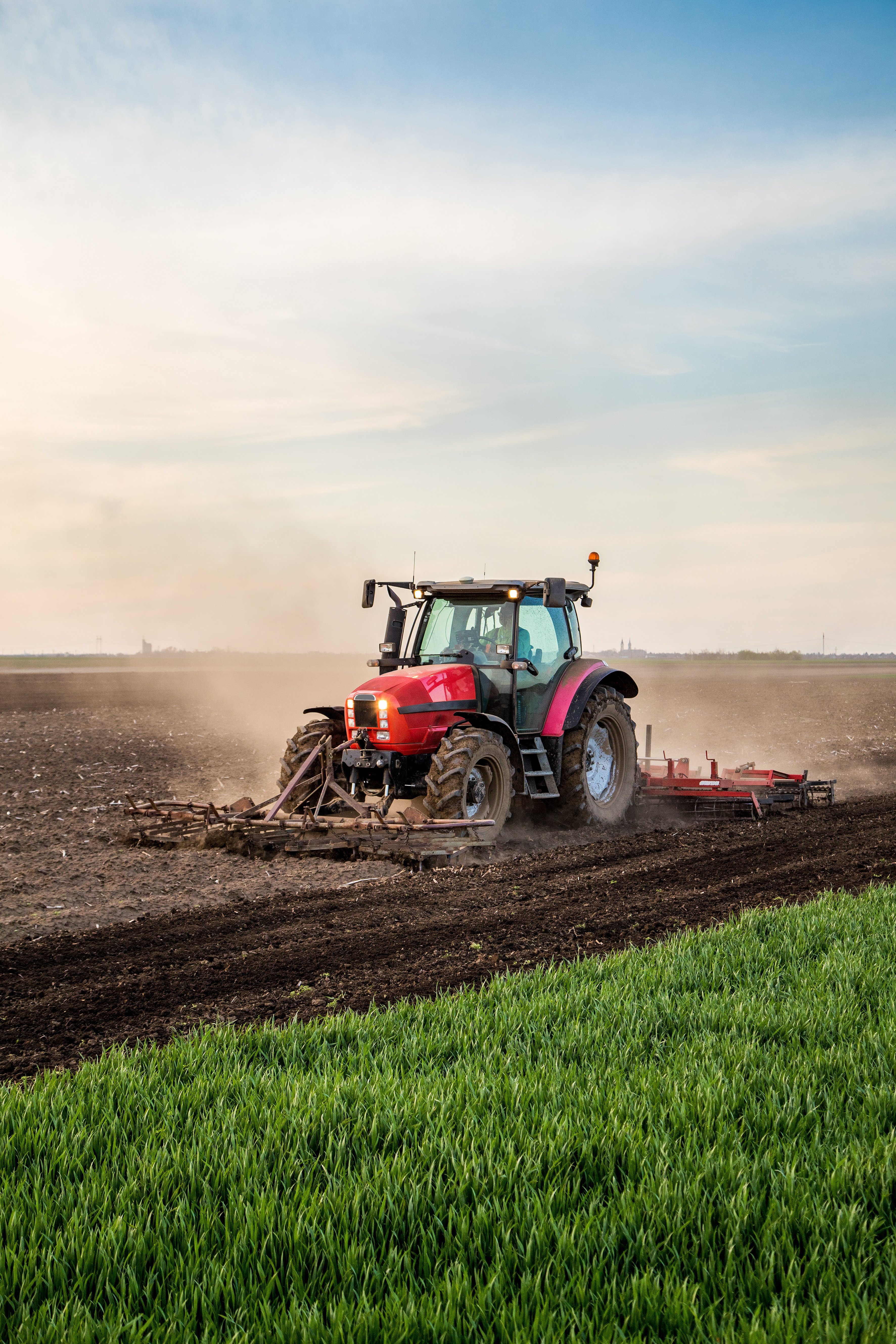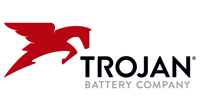Application & Technology Trends in Agriculture Equipment
Agricultural equipment operates in extremely challenging physical environments. Designers of electric drive systems for agricultural equipment need to consider the effects of extreme shock, vibration, temperature, and humidity conditions in order to choose components wisely. There are a number of challenges and trends to consider.
Current trends in agricultural equipment
There is mounting pressure on the agriculture industry to reduce greenhouse gas emissions – governments worldwide are enacting tougher environmental legislation in an effort to reduce the impacts of climate change. Agricultural and farming equipment is known to be a major contributor to deteriorating air quality.


Advances in lithium batteries are creating opportunities to electrify ever-larger pieces of agricultural equipment – the downward pressure on acquisition costs combined with benefits in energy capacity, charge times, energy efficiency, and operator safety over diesel engines are tipping the scales in Total Cost of Ownership and making electric drive systems with lithium energy storage solutions a practical reality.
The hybridization of larger agricultural equipment and the development of range extenders improve energy efficiency, reduce emissions and save money for the operator.


The clean operation of electric drive equipment eliminates most of the dangers that exhaust-producing counterparts introduce to agricultural sites. With no exhaust or fumes, farmers can breathe cleaner air.
Telematics solutions provide more information to the large farming operator across all of their assets, helping maximize productivity, schedule routine maintenance, prevent equipment failure and adjust how human and mechanical resources are deployed.


The rise of electrification
- Electric drive systems:
- provide instantaneous torque at all speeds
- generate significantly less noise
- are far less complicated to build and maintain
- reduce greenhouse gas emissions
- are more efficient, reducing wasted energy and excess heat generation
- are more economical to operate over time
- For operators directly using machinery and equipment, electrification eliminates the time and fuel that ICEs consume during warm-up and idling periods. For farmers, this expands agricultural production capabilities, reduces downtime, simplifies maintenance and insulates against extreme fluctuations in fuel costs.
- The emergence of lithium battery technology continues to improve electric drive system efficiency
- The emergence of high-frequency power electronics widens the efficiency gap

The evolution of battery chemistries
Historically, agricultural equipment has been powered by gas or diesel-fueled internal combustion engines. Fossil fuels can meet the demand for high instantaneous power levels and significant energy capacity to power a vehicle for an extended period of time. Traditional lead-acid batteries have a low energy density, so cannot meet the equipment’s needs.
Over the last few years, a transition has begun in agricultural equipment from diesel power plants to lithium batteries and electric drive. This trend has emerged initially in compact equipment, but larger vehicles are now beginning to electrify or hybridize. There are a number of reasons for this transition, but the most significant is the Total Cost of Ownership placing lithium solutions equivalent to or superior to diesel machines.
Charging system options
It's more than just volts and amps. Incorporating the right battery charger solutions for individual agricultural equipment or fleet operations is an important design consideration. Returning energy to batteries safely, appropriately, and efficiently requires a deep understanding of how batteries react to charge and discharge. Lithium batteries need Battery Management Systems to ensure safety and CAN bus communications provide significant operational benefits.
Access to power can be challenging for electric agricultural equipment, primarily when used in a large field or remote or rural location. Deploying electric equipment will require access to reliable electric power to recharge all the machines, or operators and foremen will become frustrated.
- On-board chargers can be well matched to their lithium battery packs' size and recharge requirements for efficient overnight charging. It can also allow for opportunity charging to help extend duty cycles.
- Off-board charging can be provided at a central location, with high-power battery chargers providing substantial energy to high-capacity lithium battery packs when equipment is not in use.
- Hybrid charging solutions can be developed that combine the best of both systems, especially for vehicles operating for more extended periods of the day; opportunity charging with an on-board charger during idle time or breaks and periodically using a higher power off-board charger when the battery pack isn't in use.
- Battery swapping may be an attractive option in the heaviest duty cycle scenarios – where the equipment can't make it through its daily operations on a single charge.
The future of agriculture equipment
The most forward-thinking farmers are already starting to consider the impacts of technologies well beyond what is happening today. Agricultural equipment manufacturers will need to consider the impacts of these future concepts:
- Rising agriculture costs and shortage of skilled labor will place greater demands on the equipment used on farms and lead to the development of new products that can automate once manual tasks. Agricultural robots are on the horizon.
- The deployment of drones helps collect raw data for farm monitoring, facilitating aerial imaging and surveying of near and far-stretched fields, livestock tracking, geofencing and grazing monitoring.
- Advanced precision control technology will have zero or minimal negative impact on the environment. Precision agriculture improves profitability while addressing sustainability challenges.
- Agricultural equipment requirements on site will change with controlled environment agriculture (CEA) becoming increasingly popular (such as indoor farming, vertical farming, and greenhouses) due to fluctuating weather events interfering with traditional farming methods.
- Renewable energy solutions can help agricultural sites become more independent of the electrical grid.
- Large-scale swappable energy storage systems can be deployed for remote agricultural locations. Megawatt-hours of power can be delivered to the site, used up, then replaced as needed with a fully charged “tank.”
- On-site energy storage can be deployed to peak shave electrical demand, provide energy security and stability, manage and buffer load on the electrical grid, and even provide arbitrage opportunities to sell energy back to the grid.
About Delta-Q Technologies & ZAPI GROUP
Delta-Q Technologies is charging the future and driving the world’s transition into electric energy! We collaboratively design, test, and manufacture robust battery chargers that improve the performance of our customer’s electric drive vehicles and industrial machines.
As the supplier of choice for Tier 1 OEMs, we use our values, perseverance, and engineering expertise to guide our customers through the electrification process for a sustainable world.
We're also part of the Zapi Group, a global leader in electronic speed controllers and associated products for battery and hybrid-powered electric vehicles.
Headquartered in Vancouver, Canada, Delta-Q’s team and distribution spans five continents to service industries such as electric golf cars, lift trucks, aerial work platforms, e-mobility, floor care machines, utility/recreational vehicles and new markets, like outdoor power equipment.
Some of our customers

%20(3).png?width=200&height=67&name=VitaMainLogo(black)%20(3).png)




Some of our battery partners





“Our partnership with Delta-Q Technologies has come with great success! We're pleased with the results and the positive responses from our customers since the integration of their chargers onto our NexSys® PURE batteries.”




